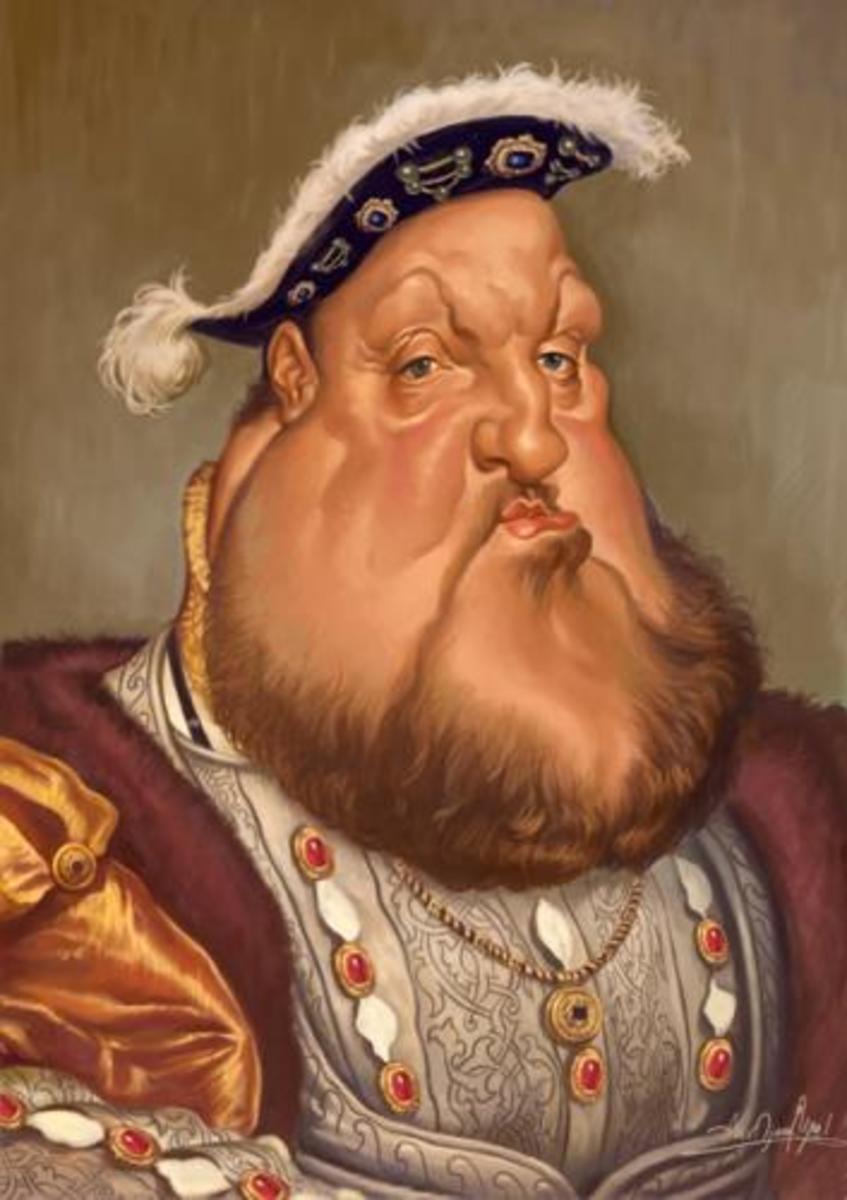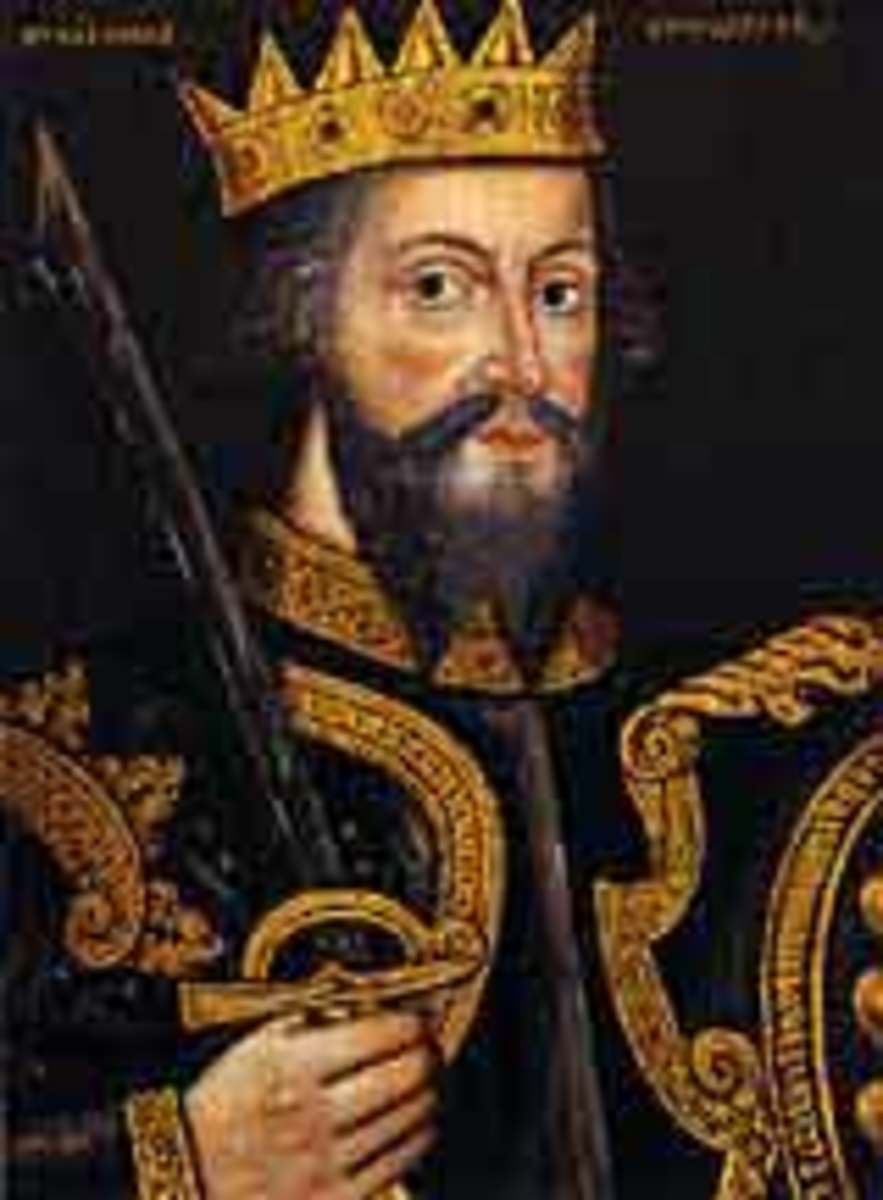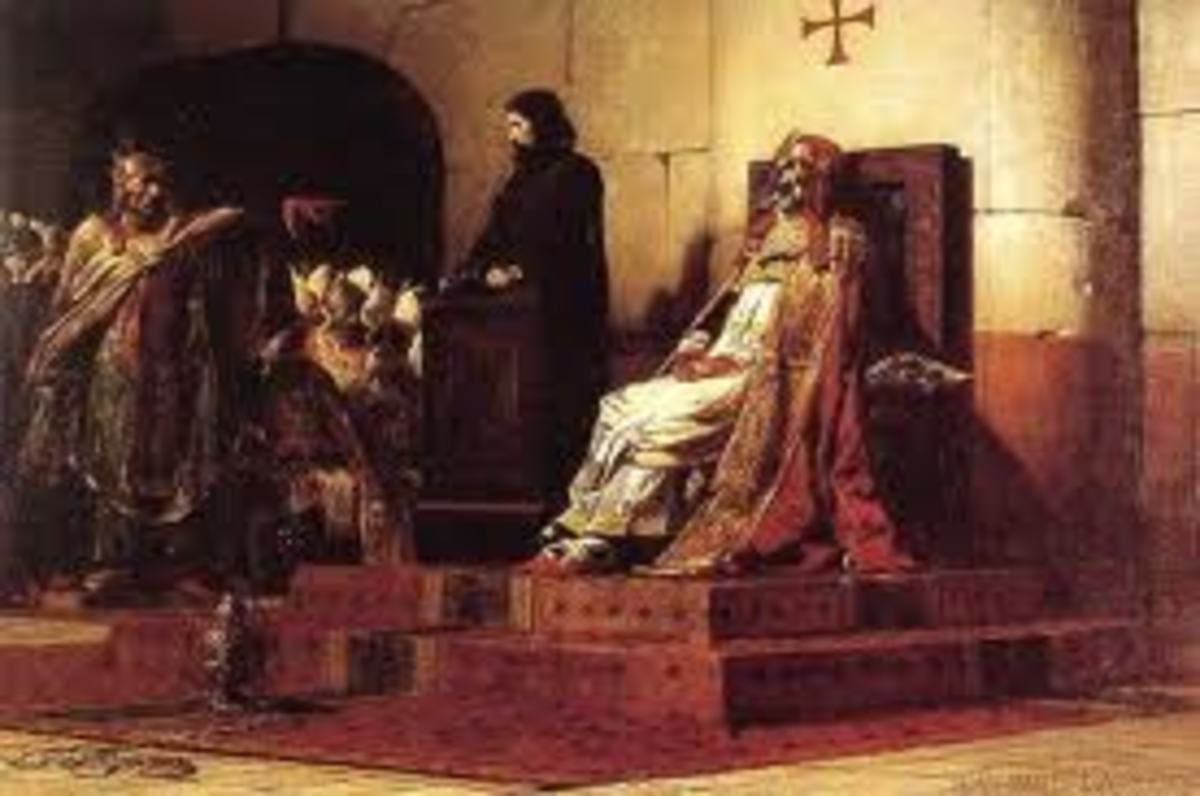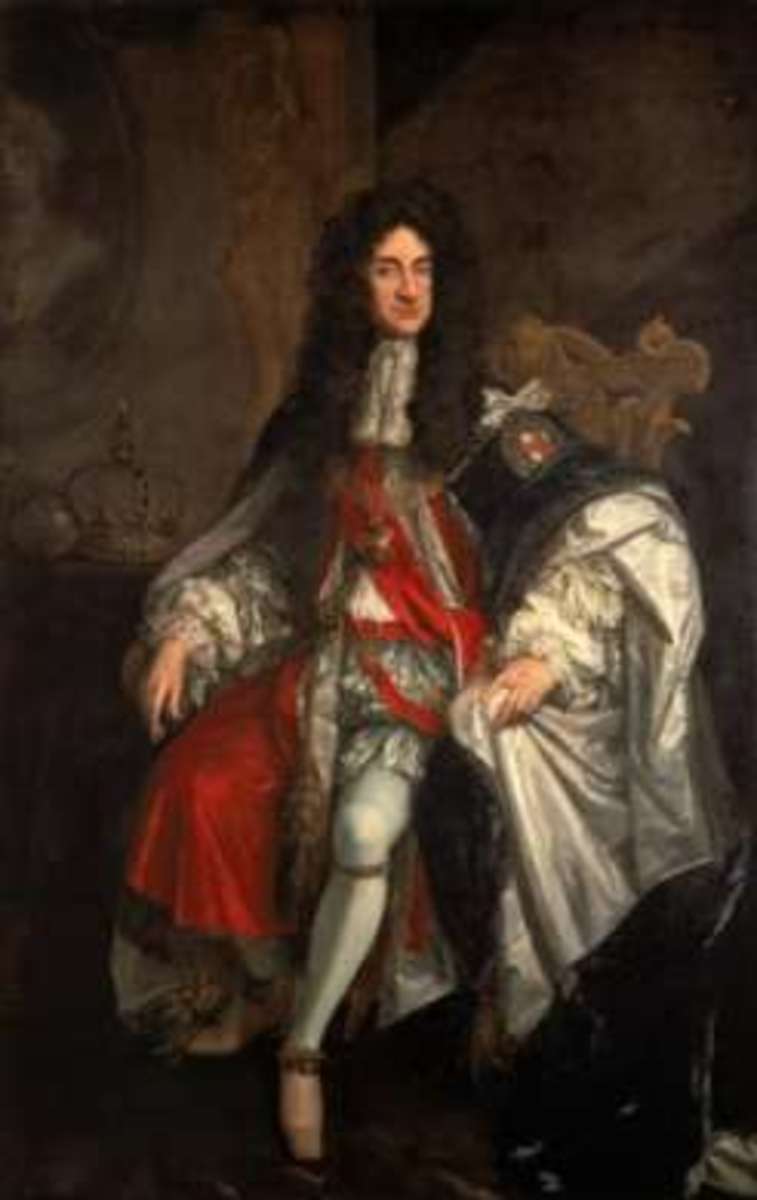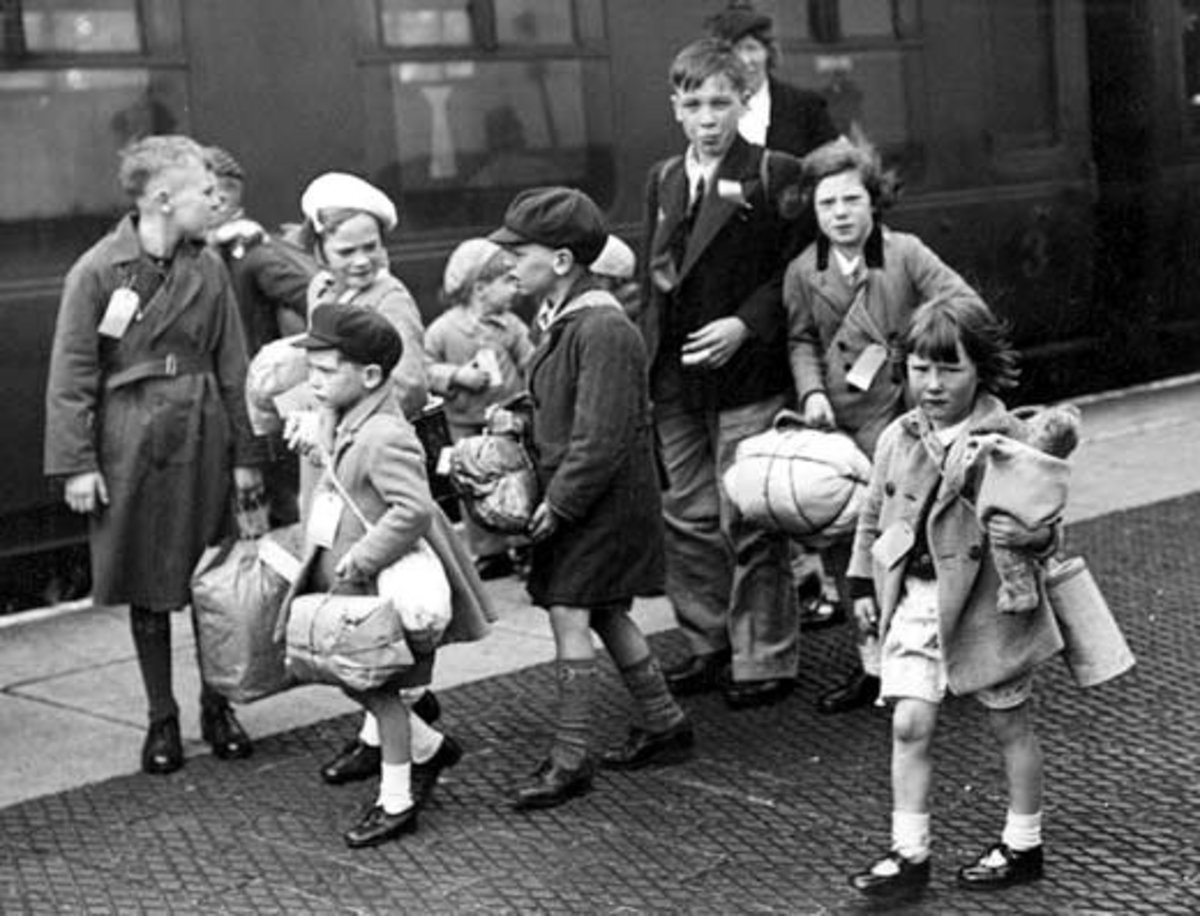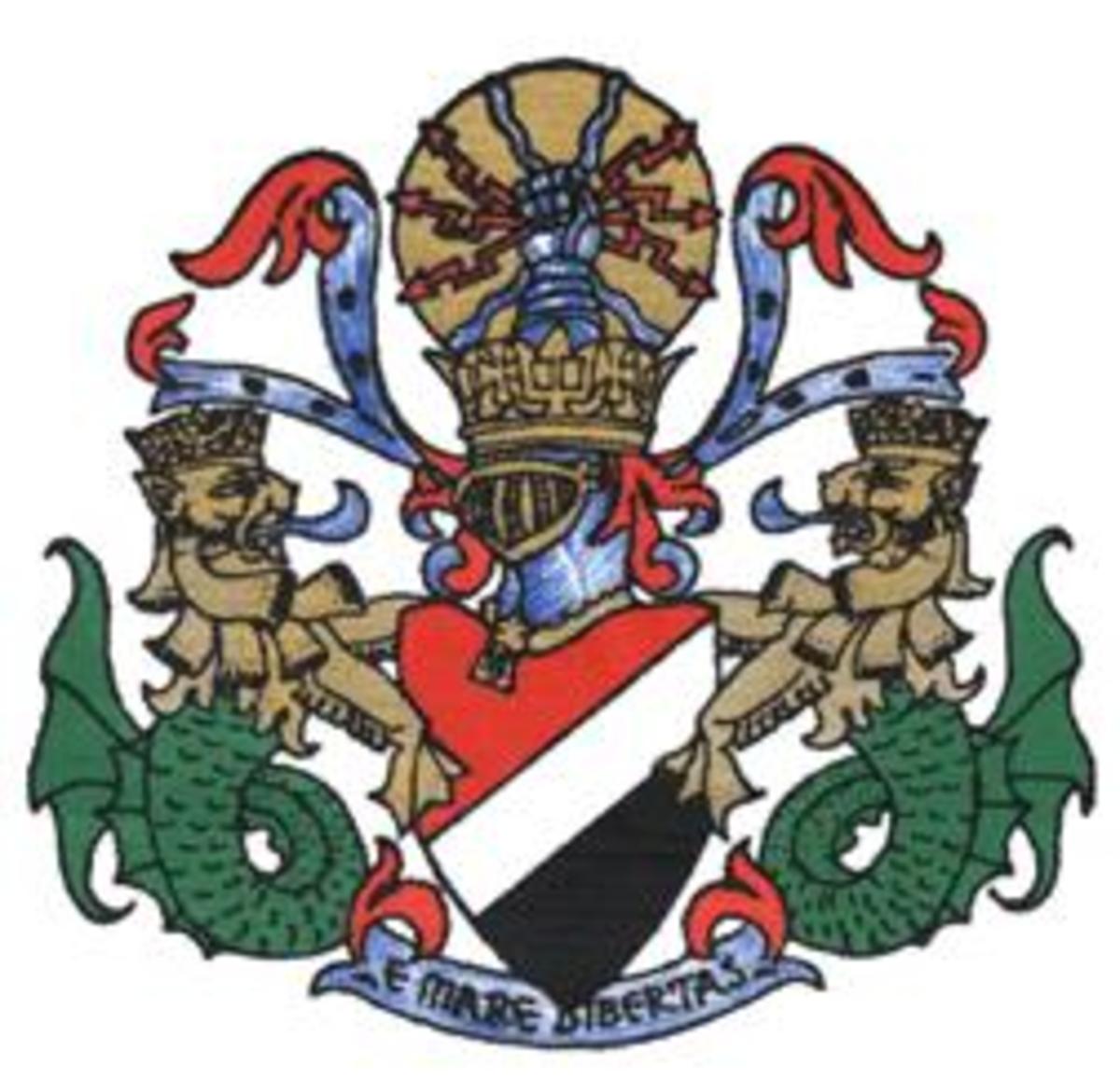To Kill a King: The Sad Fate of Charles I of Britain
Images courtesy: WIKIPEDIA.COM
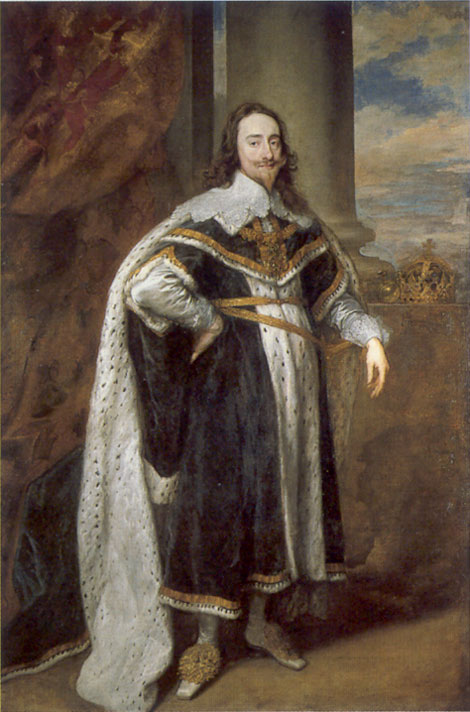


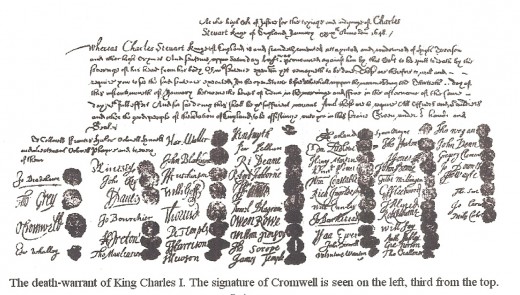
By Gloria Siess, {"Garnetbird"}
During the time of Stuart England and the British Civil Wars, a sad fate awaited their King, Charles I. Due to the intense desire of many nobelmen to restrict or abolish the Monarchy, they grouped together to try King Charles for Treason. On January 1st, 1649, he was put on trial, accused of being a "tyrant, traitor and murderer; and a public and implacable enemy to the Commonwealth of England."The prime mover behind this event was none other than Oliver Cromwell, who would manipulate himself into a seat of great power after the execution. Many did not approve of this trial, and many resisted Cromwell's strong arm--to no avail.
Chief Judge was John Bradshaw, who wore a special metal-lined hat to avoid being killed during the proceedings. 59 signatures of Commissioners would be found on the King's Death Warrant, along with Cromwell (of course). Charles did not defend himself against the flagrant charges, as he did not acknowledge its legality in the first place. His date of execution was set for January 30th, 1649. By the time the Monarch spoke up to announce his innocence, it was too late: they were shoving himself out of the court of justice and into a cell--probably the Tower of London--where he would be held until his death.
The day of his death was cold and bitter. In an act of "mercy" the Commissioners allowed Charles to take a final walk in St. James Park, with his beloved dog. The King wore very thick under garments as he was chilled and did not want the kingdom to see him shivering at the execution. In the manner of many such noble rulers, Charles wanted to appear unafraid and kingly, even as he went to the executioner's block to be beheaded.
"I have delivered to my conscience," King Charles I stated, "I pray God you do take those courses that are best for the good of the kingdom and your own salvation." As he laid dead, a great groaning cry was said to have passed through the crowd. Spectators ran up to dip their hankies in his blood, as though seeking magical power. The Monarchy was abolished, with Cromwell thick in its midst as usual, and England became a "Council of State."
When Charles II (The King's son and heir} returned to England to take command and resume the Monarchy they had tried to abolish, he revenged his Father's horrid death with administrative skill. Those men who signed the death warrant were hunted down and executed--some drawn and quartered. Some regicides escaped to Switzerland, to the Netherlands, and four to Germany. Four escaped to the "New World" of America, including my direct ancestor, John Blakiston, 30th signer on the death warrant.
Blakiston fled to his brother's estate in Maryland, where he was said to have died of a heart attack. The family legend states that he had missed his family in England and had died of a "broken heart."John Blakiston's brother was my own Grandfather to the 10th generation (approximate) who had changed his own sirname from Blakiston to Blackstone--perhaps to avoid any scandal?Nancy Blackstone would marry a Parnell, and my Grandmother's line was on its way.
What fascinates me the most is the fact that my Mother's side of the family remembered this story and passed it down. When I checked on the historial facts, it was backed up by documentation of the period, which states that John Blakiston died six months after fleeing England. Before the trial of Charles I, John Blakiston was a member of Parliament and Major of Newcastle. This Hub is a humble tribute to a King whose death was a ghastly episode in the annals of British History and totally uncalled for.
To this day, no one knows the identity of the Executioner, who was masked during the grisly event.


